Each year more than 500 000 animals are harmed, tortured and slaughtered for the purposes of animal testing for cosmetics. And that’s just one part of the problem.
More than 100 million animals, in the US alone, are used for testing in other industries and for other purposes as well. These include the drugs and food industry, the cosmetics industry, medical and biology trainings, scientific research and experimentation, and so on.
All these animals are crammed in crowded cages and live miserable lives. They don’t get any protection from abuse. They’re tortured beyond any ethical limit. They are only bred and kept alive as long as they can be of use for animal testing in the cosmetics industry. After that, these companies that perform the tests just get rid of them in the most cruel ways you can imagine.
Most people are unaware of the correlation between the cosmetics industry and the horrific treatment of animals.
So, have you ever thought about the fact that maybe your skincare, haircare and makeup routine may be causing harm to animals?
Animal testing for cosmetics 101
A lot of people are confused as to what animal testing actually is, why it is cruel and how we can stop it. In this article, we aim to answer the following questions:
- When and why did we start testing on animals in the first place?
- What kinds of tests are performed on animals and what’s so cruel about them?
- Are the tests the only ethical problem?
- Are ethics the only problem with animal testing?
- What alternatives to animal testing are there?
- Where is testing on animals banned? And what’s the deal with China?
- How can I help? How do we get companies to stop testing on animals?
- What does cruelty free mean?
- How do I tell if a product or brand is cruelty free?
- What is the official cruelty free logo and certifications?
- Will my cosmetics choices make any difference?
The goal of this article is to provide some more insight and information to help educate everyone and raise awareness regarding this horrific practice.
We hope this is going to be a valuable resource for people who are unaware of this practice, as well as for everyone who just wants to learn more about the background of the animal welfare movement.
Education on topics such as this one is very important to help us make better choices as consumers when purchasing cosmetic products if we don’t want to support animal cruelty and make a difference in the lives of our fellow earthlings.
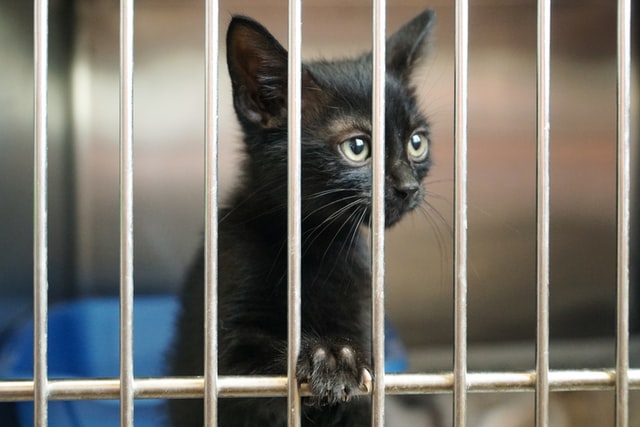
A brief history of animal testing for cosmetics
In the beginning of the 20th century, there was virtually no regulatory control in the United States regarding the safety of drugs and cosmetics.
In 1937, a pharmaceutical company based in Bristol, Tennessee, named “S. E. Massengill Company” was responsible for a mass poisoning as a result of their medicine Elixir sulfanilamide. A component within this medicine turned out to be extremely toxic. More than 100 people throughout the United States died as a result of this poisoning outbreak.
Moreover, this scandal changed millions of animal lives forever. As a response to this incident, in 1938, The United States Food, Drug & Cosmetic Act was passed. This is what pressured companies to enforce animal testing for cosmetics and similar products for the first time, in order to ensure safety for humans.
Ever since this law was passed, animals throughout the world have been subjected to all kinds of testing methods. For the purposes of the cosmetic industry, individual ingredients as well as finished cosmetic products are tested on animals. Just one new ingredient can lead to more than 1400 lost animal lives.
The most commonly used animals for these types of tests are rabbits, but mice, rats, and even primates and kittens are also frequently used.
What types of tests are performed on animals? Why is animal testing cruel?

All types of animal testing include animal exposure to dangerous chemicals in abnormal (usually lethal) doses. They usually inject the animals with these substances, or force them to inhale or ingest the chemicals, etc.
Here are some examples:
Draize eye test
A substance is placed in the rabbit’s eyes, with the intent to evaluate whether the chemical is an irritant. The rabbits are restrained for weeks so as to observe the effects of the substance for longer periods of time.
These tests result in several chemical and mechanical injuries including bleeding and ulcers, and most times even blindness.
Acute toxicity
These types of tests include rats and mice, and are based on exposure to dangerous chemicals by mouth, inhalation or skin. In the past, the Lethal Dose 50 tests were done, which are conducted until at least one half of the test animals die.
The surviving animals are killed after the experiment so that an autopsy can be performed.
Unfortunately, that’s just the beginning. Animals are also burned, starved, drowned, brain-damaged… They’re also infected with all kinds of diseases. Bunnies and kittens are blinded, rats and mice grow tumors as large as their own bodies, they suffer seizures and brain damage.
Check out The American Anti-Vivisection Society for more details.
The test itself is only part of the issue – there are other reasons why animal testing is cruel
In addition to the gruesome tests, the animals used in these experiments live in the most miserable conditions.
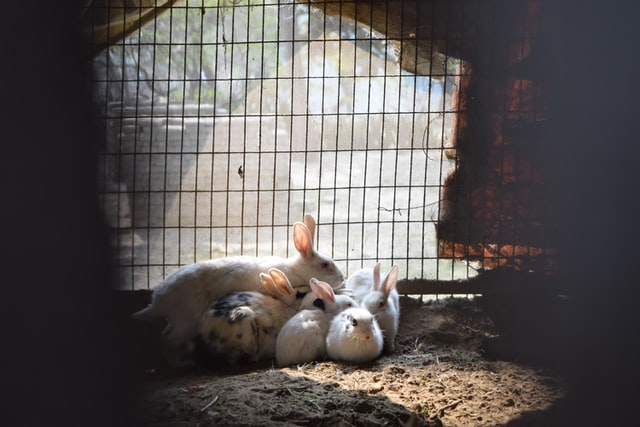
They’re dumped in crowded cages and are not given any painkillers or medication after the painful procedures they’ve been put through. All animals in these labs live in fear, starved and mistreated. They are terrified whenever someone walks by.
They never know when they’ll be taken out of their cages for another horrible procedure, or maybe killed just like the rest of the animals they see getting killed right in front of their eyes every day.
Animal testing is unreliable and inaccurate
At least all this pain and suffering provides assurances that the products are safe for human usage, right? No.
Animal testing is not just cruel, but also the least reliable and most expensive of all the testing methods we have available today.
In the modern world, it is completely redundant and obsolete. The truth of the matter is that tests performed on animals aren’t even accurate as there can be many differences between the effects of these ingredients in humans and animals.
Let’s take the Draize eye test as an example. There are several significant differences between the structure of the eyes and the volume of tears in humans and in rabbits. Different species of animals (including humans) have wide variations in responses to chemicals, regardless of the way they’re administered.
Similar problems exist with other types of animal tests for cosmetics as well. This makes all of these tests unreliable, and therefore obsolete.
Animal testing alternatives are ethical, cheaper and more accurate
There have been significant advancements in the development of new alternatives to animal testing (known as in vivo tests). Some of these alternatives include in vitro testing, computer (in silico) modeling and research with human volunteers.
I have an entire post about how cruelty free products are tested, so check it out if you want to learn more.
Harvard’s Wyss Institute has created “organs-on-chips” which are based on human cells that are grown to mimic human organs, both structurally and functionally. These microchip organs can be used to study the effects of different substances by modeling human organs.
On the other hand, some tests are based on computer models. Researchers have developed algorithms that can utilize large databases of chemicals to predict whether a substance is toxic or not.
Biologists have been experimenting with computer models of human organs for a while now. With the evolution of this technology and with better statistical and experimental data availability, these models are more accurate than ever.
Testing of new ingredients and substances is now possible through computer-based simulations, which can be used for drug trials. One of the most sophisticated models is that of the human heart, but there are models for several other organs relevant to testing as well.
Of course, these are just examples. There are other alternatives to animal testing as well, and new ones are being developed each day.
Generally, in vitro, in silico and similar tests take less time than tests on animals take to analyze, are cheaper, and give equally or more accurate results.
Some countries ban animal testing for cosmetics and for others, it’s still mandatory
European Union
There are three important animal testing bans in all 27 member states of the European Union as of 2020: the two testing bans and the marketing ban.
Testing bans:
There were several attempts to ban animal testing for cosmetics within the EU before 2004, however, the lack of alternative methods postponed these efforts.
In 2004, the European Union banned animal testing of finished cosmetic products within the EU.
In 2009, the European Union banned testing ingredients on animals within the EU.
Marketing ban:
In 2013, another animal testing ban was introduced in the European Union, which refers to a prohibition of sale of cosmetics and ingredients in the EU that have been tested on animals.
These prohibitions were introduced regardless of whether alternative tests exist.
United States
In the United States, the situation was at a standstill until the beginning of 2020, when three states – California, Illinois and Nevada made the first move and banned the sale of cosmetics tested on animals.
However, we’re still waiting for a nationwide ban.
Other countries
Other countries that have banned/restricted animal testing for cosmetics are Norway (2013), Israel (2013), India (2014), New Zealand (2015), South Korea (2015), Turkey (2016), Guatemala (2017) and Taiwan (2019).
However, these bans do not apply in certain cases. Animal testing for cosmetics is still performed.
Although it depends on the country in question because different laws and regulations apply everywhere, these bans usually contain several loopholes:
- They usually don’t apply when companies introduce new ingredients that haven’t previously been tested on animals. In such cases, tests are usually still required.
- Another case when these bans usually don’t apply is when the products are exported in, or imported from other countries.
- Sometimes, they only apply when non-animal alternative tests exist for that particular test that needs to be performed.
- There are also several exceptions in cases of environmental and health concerns.
- Most times, there are other specific requirements for raw ingredients and materials used in cosmetics such as sterilizers, preservatives, etc.
These loopholes are usually provided under other regulations/laws. In the EU, one example is the REACH regulation.
REACH
REACH (Registration, Evaluation, Authorisation and Restriction of Chemicals) is an EU regulation, which was introduced in 2006.
According to this regulation, companies must provide information regarding health and environmental safety of each chemical they use.
For a lot of these chemicals, animal experiments have already been performed in the past, meaning that such data already exists. However, for each new chemical introduced, in order to provide the information required by the REACH regulation, some companies within the EU still test on animals.
And what about animal testing in China?
China is one of the most controversial countries regarding this question.
Until recently, pre-market and post-market animal testing was required by law for all cosmetics physically sold in mainland China.
In 2014, the Chinese government stopped requiring cosmetics produced in China to be tested on animals. However, such testing remained required by law for all imported cosmetics.
In 2019, China stopped requiring routine post-market testing of cosmetics. As always, there are other loopholes as well, such as animal testing for cosmetics that have been subject to client complaints, health concerns, etc.
The requirement to perform pre-market animal tests of imported products still stands.
Also, keep in mind that all of these law relaxations refer to having mandatory animal testing for cosmetics. Unethical treatment of animals for testing in the cosmetics industry is still not banned in China, meaning that companies that sell there can still perform tests on animals.
Boycotting brands that test on animals is the most effective solution to stop animal testing for cosmetics
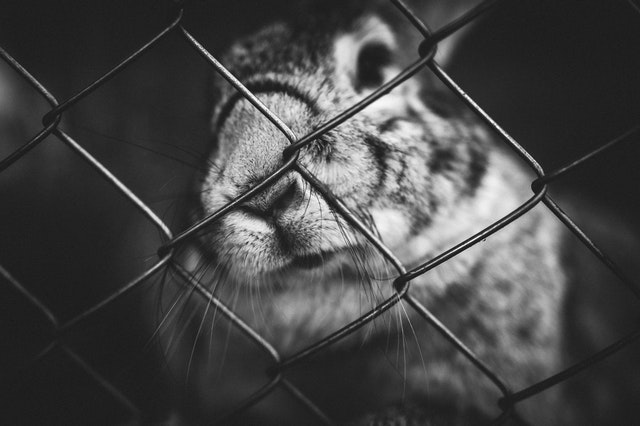
Animal rights activists and proponents of the animal welfare movement have been trying to get the public attention for years.
Many petitions have been signed, protests against animal testing have been attended by thousands of people, but these efforts still haven’t stopped these companies from testing cosmetics on animals.
Companies, however, usually adhere to the cliché and are motivated by profit. So, the most powerful way to show them that unethical treatment of animals is not acceptable, is to stop supporting them and stop buying their products.
If the demand for cosmetics that are not tested on animals keeps increasing, and fewer people are buying from brands that still test their products on animals, these companies are going to realize that they’re losing money.
Boycotting brands that test on animals aims to force them to follow their ethical competitors’ example. By boycotting brands that test on animals, we’re going to help them see that we’re against animal testing and that animal welfare is important to us as their customers.
Buying cruelty free products also helps support the brands which have decided to put an end to animal cruelty. If we continue to support them, they’ll continue producing more cosmetics that are not tested on animals.
This consumer behavior sends a clear message to companies that they need to change their animal testing policies in order to be successful on the beauty market.
What is the definition of “cruelty free”? What does it actually mean?
“Cruelty free” means that no animals have been harmed and no animal cruelty was involved during the production of that particular product.
The definition according to Wikipedia:
Cruelty-free is a label for products or activities that do not harm or kill animals anywhere in the world.
“Cruelty free” lacks a formal, legal definition though, which by itself is a source of some problems. This term is not regulated by any authorities, which is a little confusing because some brands call themselves “cruelty free” and this might mislead the customers in some cases.
As we saw in the previous sections, one of the most common ways animals are harmed during the production of cosmetics is animal testing.
So, the widely accepted meaning of “cruelty free” is “not tested on animals”.
“Vegan” and “Cruelty Free” are different things
There are several debates regarding this question – some people consider “cruelty free” to be a subset of “vegan”, because products that use animal-based ingredients within them usually acquire them in ways which are cruel to animals.
However, it is generally accepted that:
- “vegan” means that no animal by-products and animal-based ingredients are used within the product; and
- “cruelty free” means that the manufacturing of the product doesn’t cause cruelty to animals, and mostly refers to the fact that the product hasn’t been tested on animals.
A product can be both “cruelty free” and “vegan”. It can also be “cruelty free” but not “vegan”, and vice versa.
What does it take for a product or brand to be considered cruelty free?
A product is cruelty free if the finished product and all of its ingredients haven’t been tested on animals by anyone, anywhere in the world.
Some brands will claim they’re cruelty free because they don’t test the finished product on animals, disregarding the fact that the ingredients have been subject to animal testing.
Other brands just claim that they don’t test on animals, not taking into account:
- that their suppliers test the ingredients before they’re used in their products
- that third parties test the ingredients or finished products
A product can’t be cruelty free in one country and tested on animals in another country. It can’t be “partially cruelty free, except this one ingredient”. It’s either tested, or not tested on animals. There’s no in between.
A cruelty free brand is a brand that only produces and sells products that haven’t been tested on animals. Neither of their finished cosmetic products are tested on animals, and neither of them contain ingredients which have undergone such testing.
Again, a brand either is, or isn’t cruelty free. There’s no in between. You can’t say “this brand doesn’t test on animals, except for this one product”.
The general idea is that when buying from cruelty free brands, you can be certain that your money would not go to the same set of people who blind rabbits, burn mice or hurt kittens.
Parent companies that test on animals
One thing to note here is that some people don’t consider companies as cruelty free if they are owned by companies who perform these tests, even if they themselves don’t test on animals.
The generally accepted opinion is that as long as the company doesn’t inherit its parent company’s animal testing policy, it can be considered cruelty free.
However, if you’re not comfortable using brands with parent companies that test on animals, that’s understandable. Always do more thorough research in order to conclude whether a company is cruelty free according to your ethical standards.
Certifications, labels, logos…
As we previously saw, the term “cruelty free” doesn’t really have a clear legal definition. This means that companies can put such labels on whatever products they like.
See my post on cruelty free certifications to learn more about the problems with cruelty free labels and certifications.
So, there isn’t really an official cruelty free logo either.
Some companies claim they’re against animal testing and their products are cruelty free, but they’re sold in China where they might be tested on animals. Others claim their cosmetic products are not tested on animals, but their ingredients are produced by suppliers which test said ingredients on animals.
However, there are three certification programs for companies that don’t perform animal testing for their cosmetics products. These three programs are regulated by three different organizations.
Each of them has its own specific requirements and standards, so a brand certified as cruelty free by one of the programs, might not be considered as such by another.
Beauty Without Bunnies
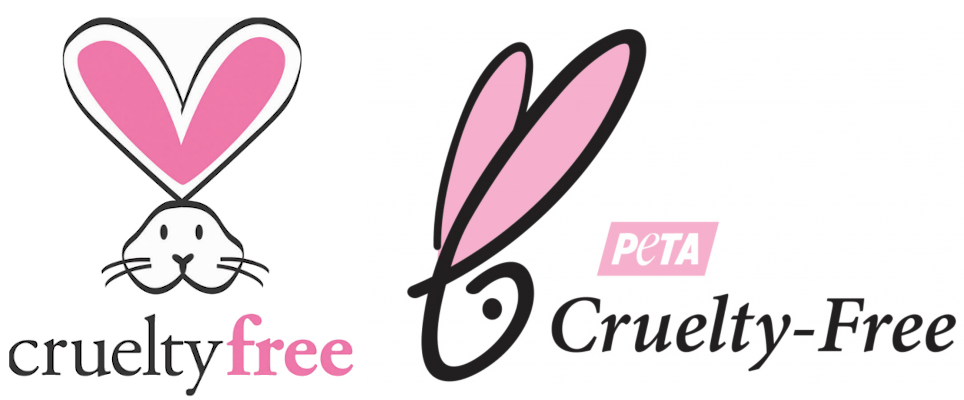
PETA’s Beauty Without Bunnies program is the most popular cruelty free program out there.
More than 4,500 companies are approved by Beauty Without Bunnies.
To be added to PETA’s ethical brands list, each company must fill out a questionnaire and sign a “statement of assurance”, stating that neither the finished product, nor the ingredients have been tested on animals.
However, there are a couple of things that you need to know:
- PETA approves even brands that say that they don’t test on animals except when required by law (those selling in China).
- They don’t actually verify if the brand doesn’t perform animal testing, but the cruelty free status only depends on the answers in the questionnaire. We need to rely on the honesty of these companies. We hope that they’re answering the questions truthfully, but we can’t be sure because no proof is required for these statements.
- Beauty Without Bunnies doesn’t perform reassessments periodically.
Therefore, not all brands on PETA’s list can be trusted. Always check other resources before deciding to buy a product by a brand on the Beauty Without Bunnies list.
Leaping Bunny
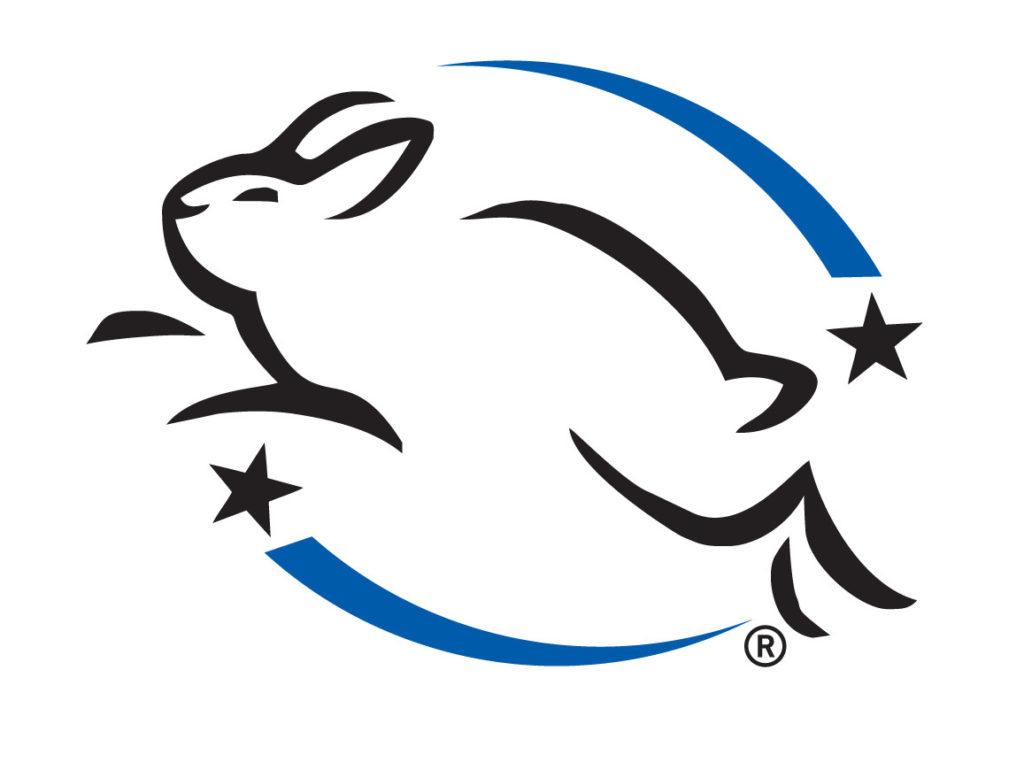
Leaping Bunny is the most reputable program for ethical cosmetics and is known as the international “gold-standard” of cruelty free products. It was established by the Cruelty Free International and the Coalition for Consumer Information on Cosmetics (CCIC).
More than 1,800 brands are Leaping Bunny approved.
They have very strict criteria for the companies seeking to get approved, as well as for their suppliers. The Leaping Bunny certification also requires evidence to be provided by the companies for all claims.
The list of requirements includes, but is not limited to the following criteria:
- the company must not conduct, commission or be a party to animal testing of finished products and ingredients
- the company must not buy ingredients from manufacturers who test on animals
- it must ensure that their suppliers do not test on animals by implementing a “supplier monitoring system”
- the company must not allow their products to be sold in countries where there are regulatory requirements for animal testing
- they must agree to recommit annually
- they must agree to an independent audit
One thing to note here is that Leaping Bunny also approves some of the brands with non-cruelty free parent companies. However, they must promise to have their own supply chains independent of their parent companies and work as standalone subsidiaries.
You can see the Leaping Bunny FAQ for more information.
Choose Cruelty Free
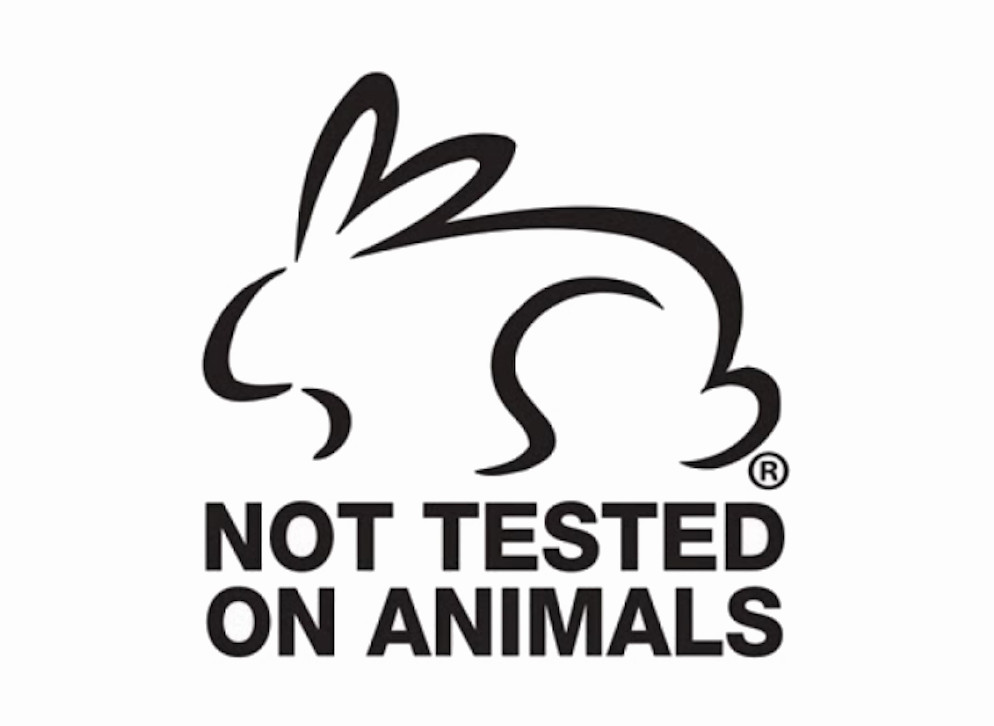
Choose Cruelty Free (CCF) is an independent, non-profit organization based in Australia.
Although mostly targeted at Australian brands and consumers, they’ve recently also become relevant internationally.
CCF is a great resource as they also have lists of brands which are not only cruelty free, but also vegan, vegetarian and palm oil free.
They have very strict accreditation criteria, which include checking whether animal testing is performed through the entire supply chain.
Apart from testing on animals, they’re very cautious of ingredients as well – they have a list of ingredients which are acceptable, and a list of other ingredients which are almost always acquired from animals in cruel ways.
Another important difference between this other certification programs is that they don’t approve brands owned by parent companies that test on animals.
This is a quote from their website:
We certify based on the five year (or +) rolling rule whereby all products and ingredients must be free of animal testing by the applying brand, owning company, contract manufactures, ingredient suppliers and anyone acting on their behalf for a period of five years immediately preceding the date of application for accreditation.
In addition, CCF will not certify brands who sell in retail markets that require animal testing i.e. China.
Conclusion about cruelty free certifications
Don’t trust labels and logos implicitly. Cruelty free certification, as discussed above, oftentimes comes with caveats attached. Some certification programs have more strict criteria than others. Sometimes you’ll find a brand listed in one list, but it’ll be missing in other lists.
Always do your own research and check whether the brand actually doesn’t test on animals before buying a product. You can find plenty of information online.
There are several blogs such as this one that don’t just answer with “yes” or “no”, but also try to explain more thorough information about each brand, so you can see whether it fits within your criteria of cruelty free.
Going cruelty free really does help stop animal testing for cosmetics
By buying products from brands that use animal-based ingredients and test on animals, you’re directly supporting animal abuse.
Let’s put an end to animal cruelty! The least we can do is show the world that harming animals is no longer normal and acceptable.
Some cosmetics companies have gone cruelty free as a result of the pressure to stop animal testing
The most famous example is CoverGirl. When they got acquired by Coty, they made the decision to stop selling their products in China and got Leaping Bunny certified.
When large companies stop testing on animals, they use the media coverage to their advantage to promote themselves. However, this is a good thing, because it also helps spread the message and gets other brands to follow the example.
Reach out to your favorite brands
If some of your favorite brands still test cosmetics on animals, let them know that this is no longer acceptable to you.
Send them an email explaining that although their products are great, treating animals respectfully is important to you. Kindly inform them that they’ve lost you as a customer as a result of their animal testing practices. Tell them that you’d love to see them change their testing policy and go cruelty free.
Spread the message
There’s no reason to be pushy and blame other people who have made choices different than ours. That’s just going to be counterproductive. Some of them haven’t even considered making this choice yet.
If you’re in this category, we hope that this gives you a lot of reasons to consider going cruelty free. Join us in our efforts to stop animal testing for cosmetics throughout the world!
However, educating others can be really helpful. Most people are not aware of the effects that the cosmetics industry has on animals. Who would have guessed that animals die just so we can have longer lashes?
Educate people who are unacquainted to the pain and suffering of animals as a result of animal testing. We’re sure that a lot of them would love to help.
Spread the message to your friends and family. We can make a huge change by making at least some of our consumer choices more informed.
Start making better consumer choices
Next time you’re shopping for makeup or cosmetics generally, just think about the horrible animal testing practices. When deciding which brand to pick, check whether it’s been tested on animals.
Even if you don’t go 100% cruelty free, the change you’re making is noticeable in the large scheme of things.
Is choosing another brand of mascara to save one animal life worth it?
And now, we’d like to hear from you! Have you tried to switch to cruelty free products? If so, did you find it hard? Do you trust the certifications?
Tell us in the comments!
Pingback: Is CeraVe Cruelty Free and Vegan? (2021) - Cruelty Free Only
this is outrageous!!!! sort it out!
Thew) Additionally, we should become actively involved in efforts save innocent animals here in the U.S. Not only can the government take steps to protect animals, but individuals can also make a difference. For example, if we all boycotted products that use animal testing in favor of cruelty-free ones, the companies who still use animal testing would lose profits and their stocks would go down. This could force many companies to try and find alternatives, putting us one step closer to making animal testing a thing of the past.